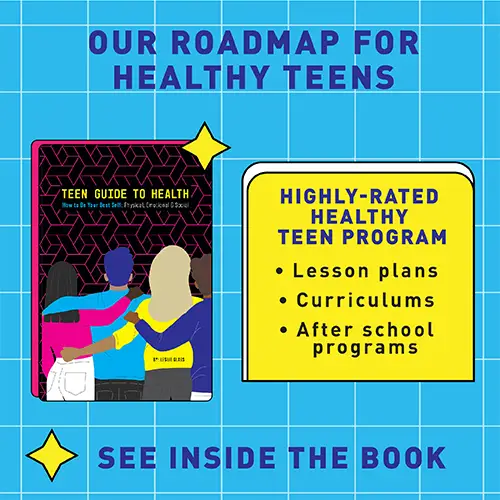Brain Breaks Are Time-outs That Everyone Needs
If you are an over-thinker, or a compulsive worker, like me, the computer in your head needs a nap. Every day, and maybe more than once a day. I’ve been known to work on a writing or editing project for hours and hours every day without taking a break. What does it do to your body and brain? Well, it’s bad for the back, neck and shoulders because that’s where the tension lives. Your muscles don’t love it. It’s not so great for weight and mood, either, since you need to move around to get your endorphins going. Do You know how to breathe to calm anxiety? And then there’s the slump. When do you feel that letdown coming and what do you do about it? Here’s an article we found useful.
Brain Break: Why You Need Them
NY Times Brain slumps are real, said Gloria Mark, a professor of informatics at the University of California, Irvine. And the antidote to this midafternoon mind sludge isn’t muddling through, no matter what hustle culture wants you to believe. It’s the opposite: You should take a break.
“We can’t expect to lift weights nonstop all day, and we can’t expect to use sustained focus and attention for extended periods of time, either,” said Dr. Mark, author of “Attention Span: A Groundbreaking Way to Restore Balance, Happiness and Productivity.” While your brain is not a muscle, the analogy is a good one, since staying focused requires our brains to burn energy, said Marta Sabariego, an assistant professor at Mount Holyoke College who studies attention and other goal directed behaviors.
But the most compelling reason for taking a brain break is that it may improve your ability to do quality work. A 2022 systematic review published in the journal PLoS ONE found that even short breaks lasting 10 minutes or less reduced mental fatigue and increased vigor (meaning the willingness to persist when work became difficult).
These breaks especially improved performance on tasks requiring creativity and less so for activities like basic arithmetic.
The analysis found that the longer the break, the better the performance boost. Since few of us can take unlimited breaks, the trick is to use the time you have wisely — even if that means ignoring your boss’s dirty look as you fiddle with a Rubik’s Cube.
How We Focus (or Don’t)
Paying attention isn’t so much an action as a way of processing information, Dr. Sabariego said. When we’re focused, our brains’ “task-related networks” filter out distractions, from the smell of fish in the office microwave to a co-worker’s incessant pen tapping.
When we’re unfocused, our brains switch to the default mode network, said Dr. Srini Pillay, a psychiatrist and the author of “Tinker Dabble Doodle Try.” He sometimes jokingly calls this the “do mostly nothing” system, because it’s active when we’re daydreaming.
In most people’s brains, “when one is working, the other one is off,” Dr. Sabariego said. The task-related network is great for checking items off your to-do list, but usually just one at a time. Problem-solving and innovation usually require letting your mind wander in order to brainstorm possible solutions using the default mode network.
“The default mode network can actually retrieve details from the nooks and crannies in your brain’s memories that the logical brain cannot retrieve,” Dr. Pillay said, “which is why sometimes people say they have their best ideas in the shower.”
For creative thinking, we need to give our thoughts room to roam — ideally by taking a break.
Timing Is Everything
The urge to check Instagram every two minutes is more universal than you might think. Dr. Mark has been studying how knowledge workers (most employees who sit at computers all day) spend their time during the work day since the early 2000s. Her research involves tracking how often workers switch between tabs on their computers — from email to spreadsheets to chat apps and back again.
In 2012, Dr. Mark did a study on 13 such workers and found that the average time they spent on one screen or tab — be it a work-related program or social media — was 75 seconds. As her research went on over the years, “it started declining,” she said. In 2020, one of Dr. Mark’s graduate students tracked 50 workers and found that the average time spent on one tab was 44 seconds.
The problem is that “you can only consciously think about one or two things at a time,” said Johann Hari, the author of “Stolen Focus: Why You Can’t Pay Attention — and How to Think Deeply Again.” “That’s a fundamental limitation of the human brain.”
“Multitasking — or toggling between spreadsheets and email — can increase mistakes, reduce creativity and cause fatigue,” Mr. Hari added. If your job requires you to multitask, chances are you’ll need to take a break more often.
How often? Everyone’s brain works differently, so there isn’t a hard and fast rule, Dr. Sabariego said. It also depends on what you’re doing. You may stay focused for 90 minutes or more doing work you find challenging and rewarding, she said.
Menial or boring tasks don’t produce the dopamine reward we get when we engage with something interesting. “Dopamine helps us narrow our visual and auditory world and increases our motivation,” Dr. Sabariego said, so you may need more frequent breaks when doing these sorts of tasks.
You can also build focus over time, she added. If you need a break every 30 minutes, try setting a timer and staying on task for 32, 35, then 40 minutes to help you space your breaks further apart.
Don’t Quit Too Soon
One thing to note: The popular Pomodoro Technique, which involves working for 25 minutes before taking a three- to five-minute break, is more of a method for fighting procrastination than optimizing deep focus. It takes time to get back to work after an interruption, Mr. Hari said. If your timer goes off but you’re still in the zone, keep going.
Consider your own circadian rhythms before arbitrarily setting a timer. Many people have peaks in their ability to pay attention around 11 a.m. and 3 p.m., with things often dropping off after lunch, Dr. Mark said. You may be able to focus for longer in the morning, but need more frequent breaks later in the day.
Brain Break: Change Your Sedentary Ways
Heading out into nature for some sort of physical activity is one of the best ways to give your brain a break, Dr. Mark said. She worked on a study with Microsoft Research that found that workers who took a 20-minute walk in nature came back to their work with greater “divergent attention,” meaning they had more creative ideas upon returning than those who kept working. Practice mindfulness.
If you can’t get out into nature, a walk through your office building will also confer benefits. Dr. Pillay refers to midday physical activity as a “booster break,” based on a 2013 study that found workers that took a 15-minute physical exercise break reported reduced stress and enhanced social interaction in their workplaces.
Brain Break: Put Your Phone Away
“We’ve devalued the idea of what a break is so that it’s, ‘I took a break from looking at my emails on my computer so I could take a walk and look at my emails on my phone,’” Mr. Hari said. Checking emails is still challenging your brain to stay in the task-related network, so you’re not exactly letting your mind wander. Even browsing social media may not be the brain break you think it is.
“If you see something upsetting on Twitter, that can interrupt your task at hand,” Dr. Mark said. “That’s going to stick with you as you move on to something else.” When that happens, you won’t be starting your next task refreshed and ready to focus, which was the goal of your break.
Brain Break: Let Your ‘Little Mind’ Play
In a 2013 Daily Beast article, Maya Angelou referred to her work process as switching between her “big mind and her little mind.” Her big mind did the heavy lifting, crafting the poems she became famous for. Her little mind, which she used in between writing sessions, loved doing crossword puzzles.
“I love this idea,” Dr. Mark said. “The little mind allows your big mind to kind of refresh and replenish.”
Solving a Rubik’s Cube, knitting or even playing a simple game on your phone can have the same effect as a crossword puzzle, she added. However, be careful not to get sucked into endless rounds of Candy Crush. Consider setting a timer for 15 to 20 minutes, which should be enough to give your task-oriented network a breather.
Brain Break: Take a Nap or Have a Snack
Few workers have the option to take a midday nap, but if you do, take it. Even just a five- to 15-minute nap can bring clarity, though you’ll need a longer rest to boost creativity, Dr. Pillay said. It generally takes the body about 90 minutes to get into R.E.M. sleep, which researchers have associated with increased creativity.
Or have a snack. Brain cells need glucose, and their activity is critical to getting into focus, Dr. Sabariego said. However, eating a large amount of food can activate the parasympathetic nervous system, making us sleepy. Instead of slamming three fistfuls of chocolate covered raisins, Dr. Pillay suggests an apple.
More Articles To Read
Growing Up In Recovery After You Get Sober
There Is Hope For An Addict’s Mom
3 Tips To Calm Mom’s Codependent Relationship Woes





















